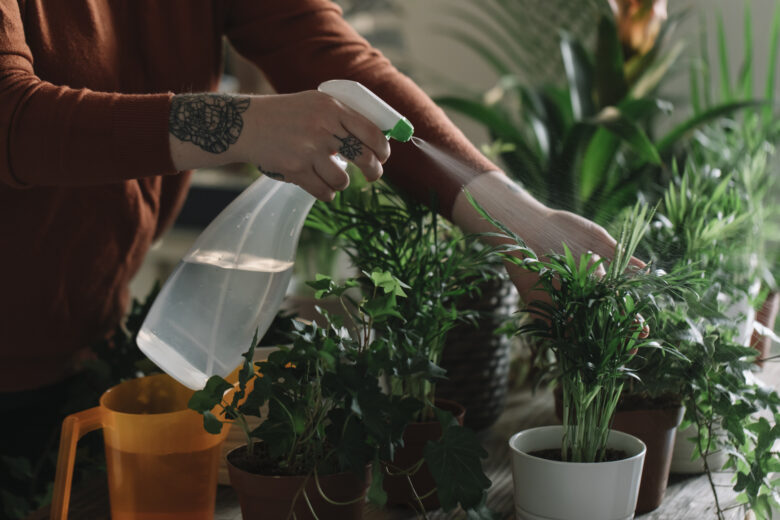
A deep dive into Wellbeing & Leisure trends.
In the past two years, we have seen new habits being formed, with great emphasis on mindfulness activities, and connection to nature.
In this report, we explore current consumption habits and share insights into life outside of work – what activities or hobbies people undertake for their health and mental wellbeing.
The report is structured into four major themes: the increase of leisure and mindfulness activities, plant parenthood, pet ownership, and Cooking/baking habits.
Happy exploring!
Methodology.
Klarna research occurred in May/August 2022, in cooperation with Dynata and across 11 countries (US, UK, Australia, Sweden, Norway, Finland, Denmark, Italy, France, Germany and Poland). The survey includes a minimum of 1,000 respondents in each country. In total, 8,114 consumers ages 18 to 75 participated.
11 countries
12,197 consumers
Leisure activities & meditation.
Following the disruptions of the pandemic to our daily lives, people across the world used more mindfulness activities to help them cope with stress and improve their mental well-being. We’ve asked people to list their top leisure activities, and how has their engagement increased since the end of the pandemic.
Most common activities to recharge/relax.
The restrictions imposed by the lockdowns left many feeling trapped at home. A great number of people across the world have started undertaking new leisure activities or hobbies at home, following the pandemic. Let’s take a look at what were the most popular activities at home to relax or recharge.
Meditation
is practiced by 31% of Finnish consumers in order to recharge/relax at home
Reading
is most practiced by Gen X (44%) and Baby Boomers (55%) to recharge at home, compared to only 29% of Gen Zers.
3x more
more men practice sports for relaxation compared to women in the US

Starting meditation.
The leisure activities that saw a surge in popularity during lockdown were “mindfulness” activities”. How we start engaging with mindfulness or meditation activities is very unique to each of us – each having specific motivations, paths, and mindsets. Advice and influence from friends and acquaintances seem to be the number one reason why people start doing mindfulness activities.
37%
of UK consumers have started meditating by reading websites online.
3 in 10
Danish consumers have started meditation through therapist recommendation.

Benefits of meditation.
Here we explore the impact of mindfulness/meditation on physical and mental well-being. A key takeaway is that meditation practice helps increase people’ mood and have a positive outlook towards life.
35%
of US consumers have noticed a decreased level of anxiety when starting meditation.
37%
of Swedish Gen Zers have noticed having more creativity when starting meditation.
How often do you meditate?
In terms of how often people meditate, the number of days per month varies across countries and generations. Some people benefit from doing it once a day, while others prefer a short session every now and then,
18 days
is the average number of days a month that US consumers practice meditation.
Finns
who meditate practice less often on average in a month – 7 days.

Top items for mindfulness activities.
Yoga equipment, candles, painting accessories… The list of items dedicated to mindfulness is large. But, what are the top items purchased by people practicing mindfulness activities?
Food and Beverages
were the most common items purchased by US consumers (43%) that promote mindfulness.
Candle & Oil diffusers
were last purchased by 3 in 10 UK consumers who practice meditation on a regular basis.
Plant parenting.
Coined by Millennials and embraced by all other generations from Gen Zers to Baby Boomers, “plant parenting” is a phrase that refers to anyone who cares for their plants as much as they care for their family members or pets. Let’s check out consumers’ appreciation for plants and how their plant-parenting all started.
Owning houseplants.
The need for plants is real. Over 1 in 2 state owning a plant at home – spanning across generations, from the youngest to the oldest – showing a high interest in growing plants indoors.
8 in 10
Polish consumers own at least one houseplant
6 in 10
US Millennials own at least one houseplant – the largest share compared to other generations (Gen Z 40%, Gen X 49% and Baby Boomers 52%).

Into Plant Parenthood.
Caring for houseplants is a term most recently described and used as “plant-parenting”, with people increasingly interested in growing plants indoors, and caring for them as they would for a child or a pet. Let’s check out who is embracing this concept wholeheartedly.
8 in 10
Spanish and Polish consumers consider themselves as plant-parents
3 in 5
Danish Millennials who own a plant consider themselves as plant-parents
An increased interest post-pandemic.
Post-pandemic, house plants have been flying off the shelves in an unprecedented fashion. The interest in plants has grown in all countries.
9 in 10
US consumers (87%) had their interest in plants increase compared to two years ago
7 in 10
Gen Zers had their interest in plants increased compared to two years ago.
Main benefits of houseplants.
The mental health benefits of houseplants are far-reaching. Not only do plants improve the air of our homes and improve our moods, but plants also help us think more creatively and disconnect from the technology. Let’s find out the main benefits of plants according to their plant-owners.
Improving the design of one’s home
is the number one house plant benefit according to Finnish (77%), and Norwegian (65%) plant-owners.
Aesthetics
are the first reason for owning house plants according to Danish plant-owners (62%).
Talking to plants.
Do plant-owners communicate with their plants? The practice may not be as far-fetched as it sounds.
French
plant-owners talk to their plants the most with three quarters doing so.
Danish
plant-owners talk to their plants the least (40%).
Pet-ownership.
Did you adopt a dog or cat during the pandemic? You are not the only one. The demand for adopting or fostering pets has risen worldwide. A staggering number have embarked on lives as new pet owners with many clearly having considered the numerous benefits of pet ownership. Scroll on for more insights on pet parents.
New pet-owners.
While approximately 3 in 10 welcomed a new pet in the last two years, pet ownership is mostly Gen Z and Millennials driven.
3 in 5
US Millennials have gotten a pet in the last two years.
3 in 5
UK and Australian Gen Zers have gotten a pet in the last two years – the highest percentage compared to other generations.
Finding pets, explained.
How and where did pet-owners get their furry-friends from? A majority of pet owners have found their pet through a private seller, but also through friends and family.
Half of Finnish pet-owners
have gotten their pet via a private seller
Animal shelter
are the main source of having a pet for a quarter of Australian Gen X pet-owners.
Benefits of having a pet.
Whilst pet owners fully understand the immediate joys that come with sharing their lives with companion animals, many of us are unaware of all the benefits that accompany the pleasure of owning a pet. Pets can reduce stress, anxiety and ease loneliness, and can provide valuable companionship for adults.
Boosting one’s mood
remains the first benefit of owning a pet for Finnish (64%) and Swedish (50%) pet owners
3 in 5
Australian female pet-owners state that owning a pet reduces stress.

The pet social-media universe.
More and more, social-savvy pet owners dedicate social media accounts to highlight their dogs, cats, rabbits and other furry friends. Social media accounts for pets have been more popular than ever before with their four-legged companions becoming real influencers and celebrities online.
45%
Swedish pet-owners have started a social media account for their pets.
1 in 2
UK Gen Z or Millennials have created a social media account for their pets.
What’s cooking.
Cooking and baking also became the most popular activities post-pandemic, with many people spending more energy and time preparing delicious meals at home for their family and friends. In this following section, we explore the current motivations behind cooking, as well as the new interests behind taking additional dietary supplements & vitamins.
More cooking at home.
Consumers have had more free time since the pandemic to experiment in the kitchen. Since then, consumers have been reconnecting with cooking, and experimenting with new flavors, but also seeing cooking as a cure for stress or feeling down. A staggering number are cooking more often compared to 2 years ago.
US consumers
cook or bake the most often compared to two years ago,
90%
of Norwegian Gen Zers cook/bake more often vs two years ago
Top cooking practices.
Cooking practices have noticeably increased, with consumers trying out new recipes, or getting into baking. Cooking for social reasons and spending time with friends and family has become more popular as well.
1 in 4
Australian consumers who cook/bake for relaxation often bake banana bread.
52%
of Swedish consumers cook with or for friends/partner/family.
Sources of inspirations for cooking.
Cooking inspirations can come from a variety of sources: restaurants, roaming around markets, search engines, social media… How do consumers get most inspiration from?
40%
of Swedish consumers get inspired for cooking through online blogs and apps
40%
of US consumers get inspired through friends and acquaintances.
Vitamins power.
With more people focused on improving their health and fitness, dietary supplements are more popular than ever. Which country takes most vitamins on average per year? 207 days is the is the average number of days US consumers eating vitamins take every year. 1 in 2 take vitamins daily.
Types of dietary supplements.
The choice of dietary supplements is today incredibly varied, each having their own benefits and purposes. We’ve asked our respondents to state which ingredients they think are most useful for them, and what are the main reasons behind taking dietary supplements. Health is at the forefront – as the primary purpose seems to maintain one’s overall health.
And that’s that.
Thirsty for more knowledge?
Make sure to check out the other reports available at Klarna Insights.

